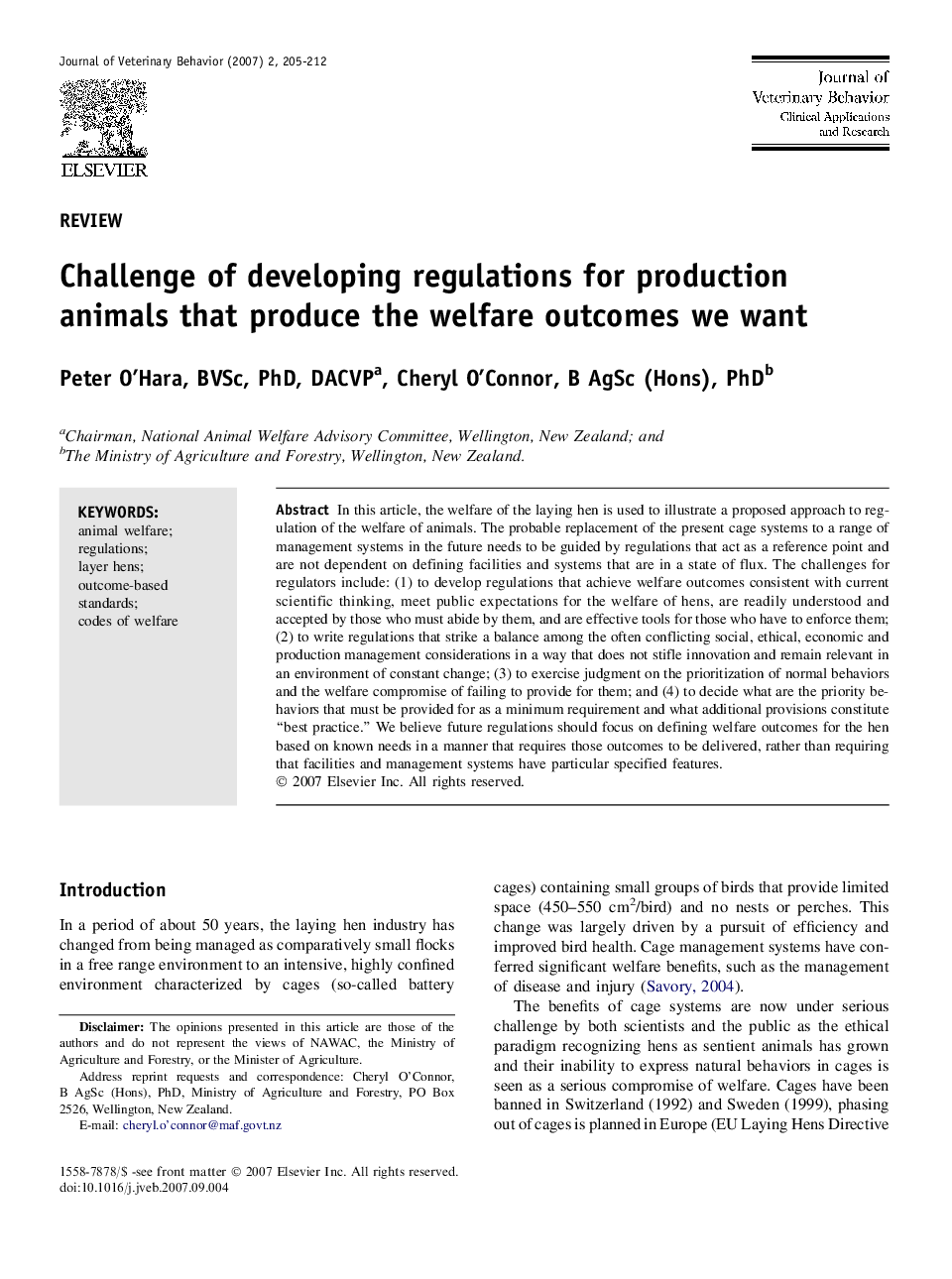| Article ID | Journal | Published Year | Pages | File Type |
|---|---|---|---|---|
| 2399615 | Journal of Veterinary Behavior: Clinical Applications and Research | 2007 | 8 Pages |
In this article, the welfare of the laying hen is used to illustrate a proposed approach to regulation of the welfare of animals. The probable replacement of the present cage systems to a range of management systems in the future needs to be guided by regulations that act as a reference point and are not dependent on defining facilities and systems that are in a state of flux. The challenges for regulators include: (1) to develop regulations that achieve welfare outcomes consistent with current scientific thinking, meet public expectations for the welfare of hens, are readily understood and accepted by those who must abide by them, and are effective tools for those who have to enforce them; (2) to write regulations that strike a balance among the often conflicting social, ethical, economic and production management considerations in a way that does not stifle innovation and remain relevant in an environment of constant change; (3) to exercise judgment on the prioritization of normal behaviors and the welfare compromise of failing to provide for them; and (4) to decide what are the priority behaviors that must be provided for as a minimum requirement and what additional provisions constitute “best practice.” We believe future regulations should focus on defining welfare outcomes for the hen based on known needs in a manner that requires those outcomes to be delivered, rather than requiring that facilities and management systems have particular specified features.
